Why do espressos from one group run faster than the other?
You’ve dialled in perfectly. You are weighing every single dose, distributing carefully, tamping perfectly flat with a calibrated amount of force — and yet, your shot times aren’t the same. After a few shots you notice it’s always the same group that runs just a few seconds faster — or slower — than the others. Perhaps you start to avoid using that group, and somehow the problem gets worse and worse. You’re careful about cleaning your machine and backflushing regularly, so you know that’s not the problem. Maybe you even call out a technician, and they tell you there’s nothing wrong with the machine. Does this sound familiar?
Maybe you’re a home barista, and you find you have to start grinding much finer than usual to get the same result. You’re sure it’s not the grinder — could it be the machine?
This problem is frustratingly common, but the good news is that it’s usually an easy fix. This post will help you troubleshoot your wayward group head, and to explain how to avoid the problem in future. Fixing a problem with any machine is almost always a process of elimination. When there are several things that could have gone wrong, it makes sense to try the simplest fixes first, before you start pulling your machine apart. The most common cause of different flow rates is perhaps a blockage at the flow restrictor (see ‘Water Debit and the Flow Restrictor’, below) — but there are a few basic things to double-check first.
Baskets, Screens, and Blocks
The first thing to check is very simple, but easily overlooked. Are all your filter baskets identical? Even a small difference between baskets can affect the shot time, so make sure that you have the same brand and same size of basket in each portafilter, and check them for damage or imperfections.
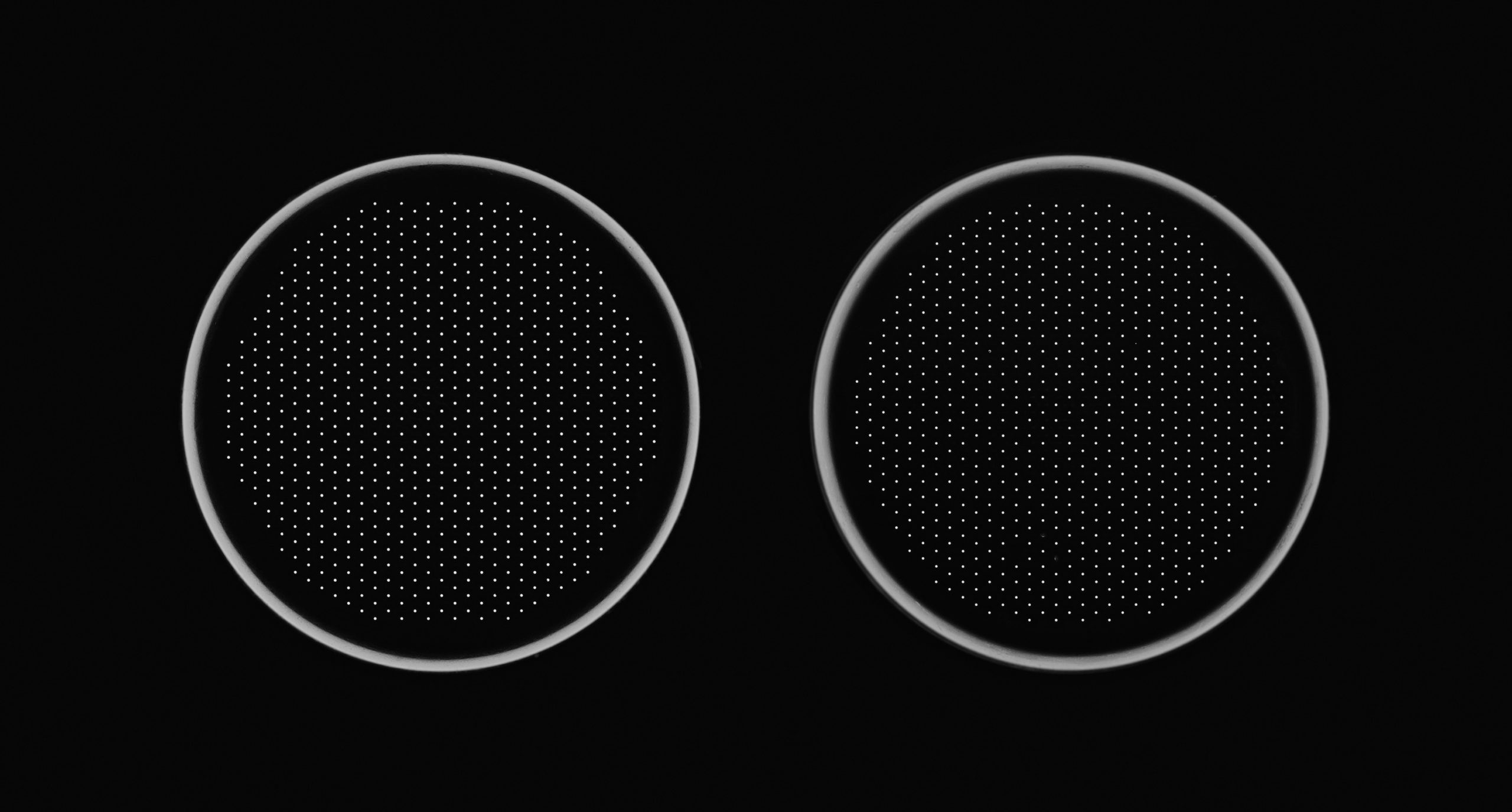 Just a few blocked holes at the bottom of the filter basket (right) can have a noticeable impact on the flow of espresso.
Just a few blocked holes at the bottom of the filter basket (right) can have a noticeable impact on the flow of espresso.
It’s also worth double-checking the shower screens and dispersion blocks (if they can be removed on your machine). Take out the screens and blocks, clean them and check them for damage or blockage — and don’t forget to make sure that they’re identical, too. If you have different-sized dispersion blocks, then you will have a different amount of headspace in each group. Changing the size of the dispersion block even by a few millimetres has a measurable effect on the content of the espresso (Khamitova et al 2022).
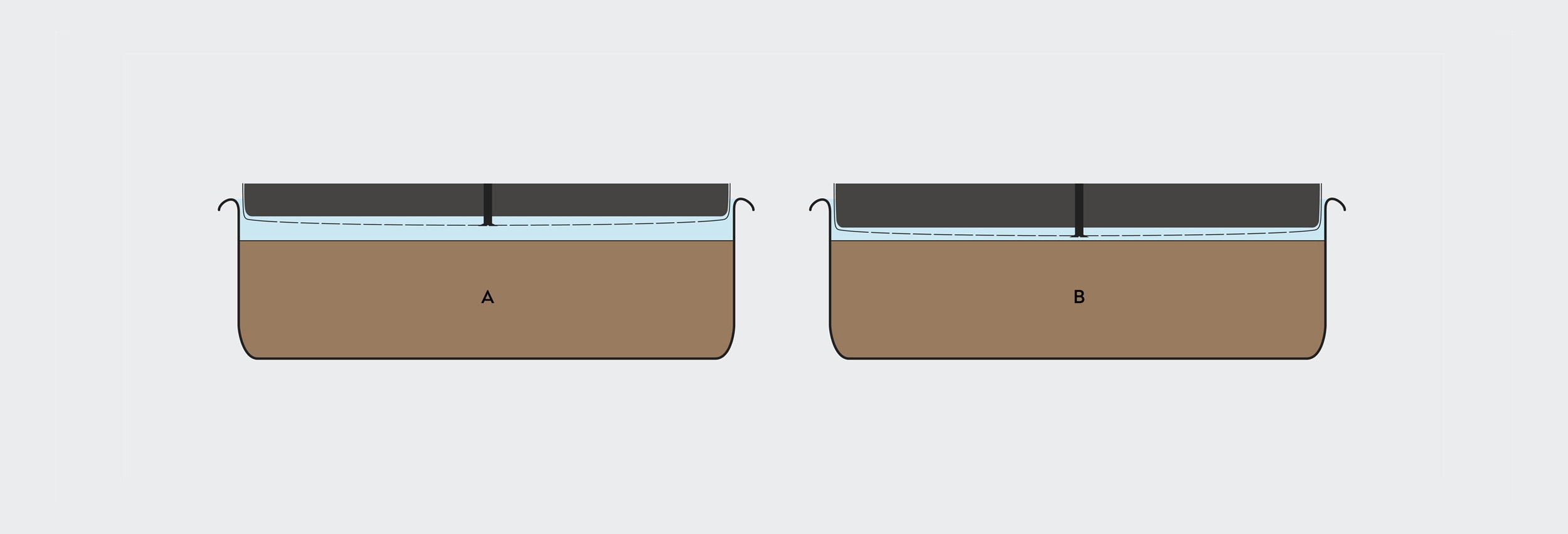 The size of the dispersion block affects the account of headspace above the puck. A larger headspace (left) creates a preinfusion effect.
The size of the dispersion block affects the account of headspace above the puck. A larger headspace (left) creates a preinfusion effect.
If you’re not sure, then try switching the screen and block from one group onto another: if the problem moves with them, then it’s time to replace your shower screens. If not, then the problem must be something to do with the grouphead itself.
Volumetrics and Scales
If you’re sure it’s not an off-brand basket or a blocked shower screen, then it’s time to double-check your shot volumes. If you’re using a volumetric machine, then use a scale to double check the weight of espresso coming out of each group. If they don’t match up, then it’s time to reprogram the shot volumes.
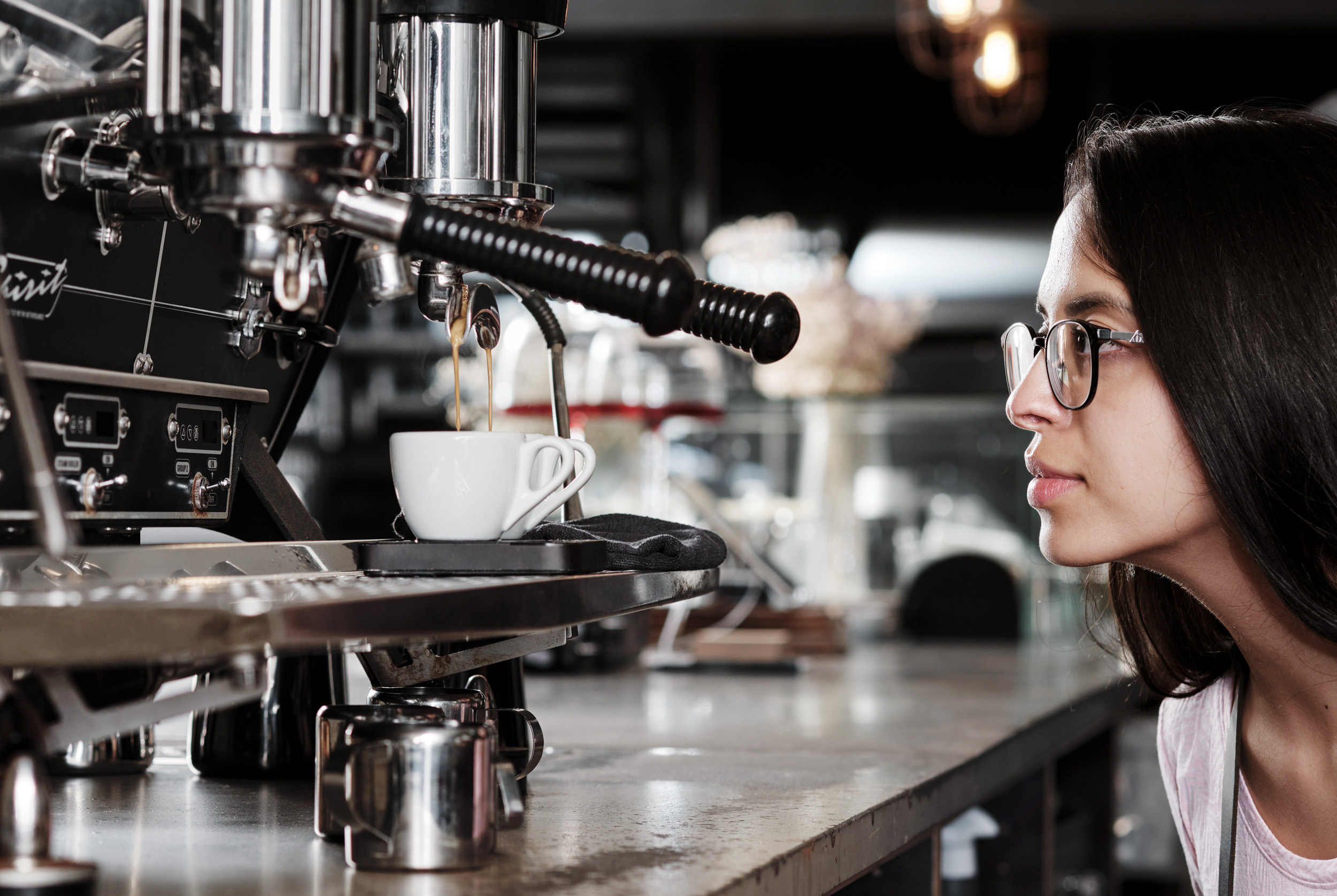 Keep an eye on your equipment and double check the shot volumes. (credits: Nord Coast Coffee Roastery and Manuela Vásquez)
Keep an eye on your equipment and double check the shot volumes. (credits: Nord Coast Coffee Roastery and Manuela Vásquez)
On many machines, if you program the shot volume on one group (usually the left-hand group), it copies the programming across to the other groups automatically. The problem is that, due to small differences in the water path to each group, using the same program for each group rarely works perfectly.
To get each group to deliver the exact same volume of liquid, it’s important to program each group independently. Start by programming the ‘master’ group on the left hand side, then reprogram the other groups one by one. If you need to reprogram the master group at any time, then be aware that it will overwrite the program on the other groups and they will also need to be reprogrammed.
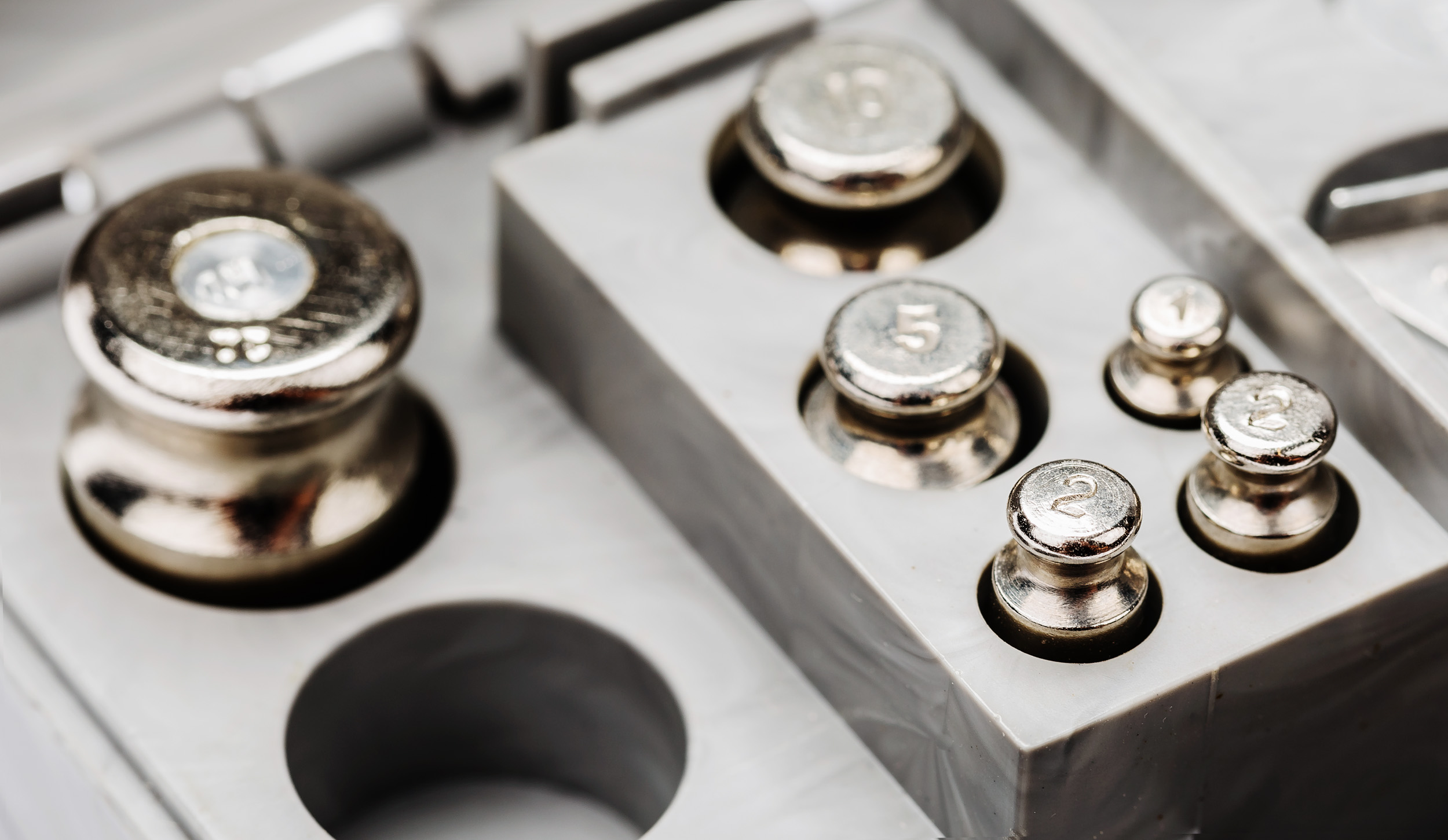 Regular calibration helps to keep your scales accurate.
Regular calibration helps to keep your scales accurate.
If you’re using scales, rather than volumetrics, then double check that your scales are calibrated correctly. Use a calibration weight and make sure that all your scales give the same reading. If you’re only using one set of scales to weigh all your shots, then check that it reads the correct weight when it’s in position under each group — sometimes a small obstruction in the drip tray can interfere with the reading.
Water Debit and the Flow Restrictor
The water debit is just an engineering term for the flow rate of water from the group — without a portafilter in place. Small differences in the water debit between the groups can cause big differences in the shot time — and this is probably the most common cause of different shot times between groups.
If the flow of water from one group is slower than the others, then it will take longer for the space above the puck to fill with water, and the puck will be in contact with water for longer before the brewing pressure starts to build up. This acts as a kind of preinfusion, and once the pressure does build up, the shot will run faster as a result. Strangely, a slower flow of water from the group can sometimes result in a faster espresso shot.
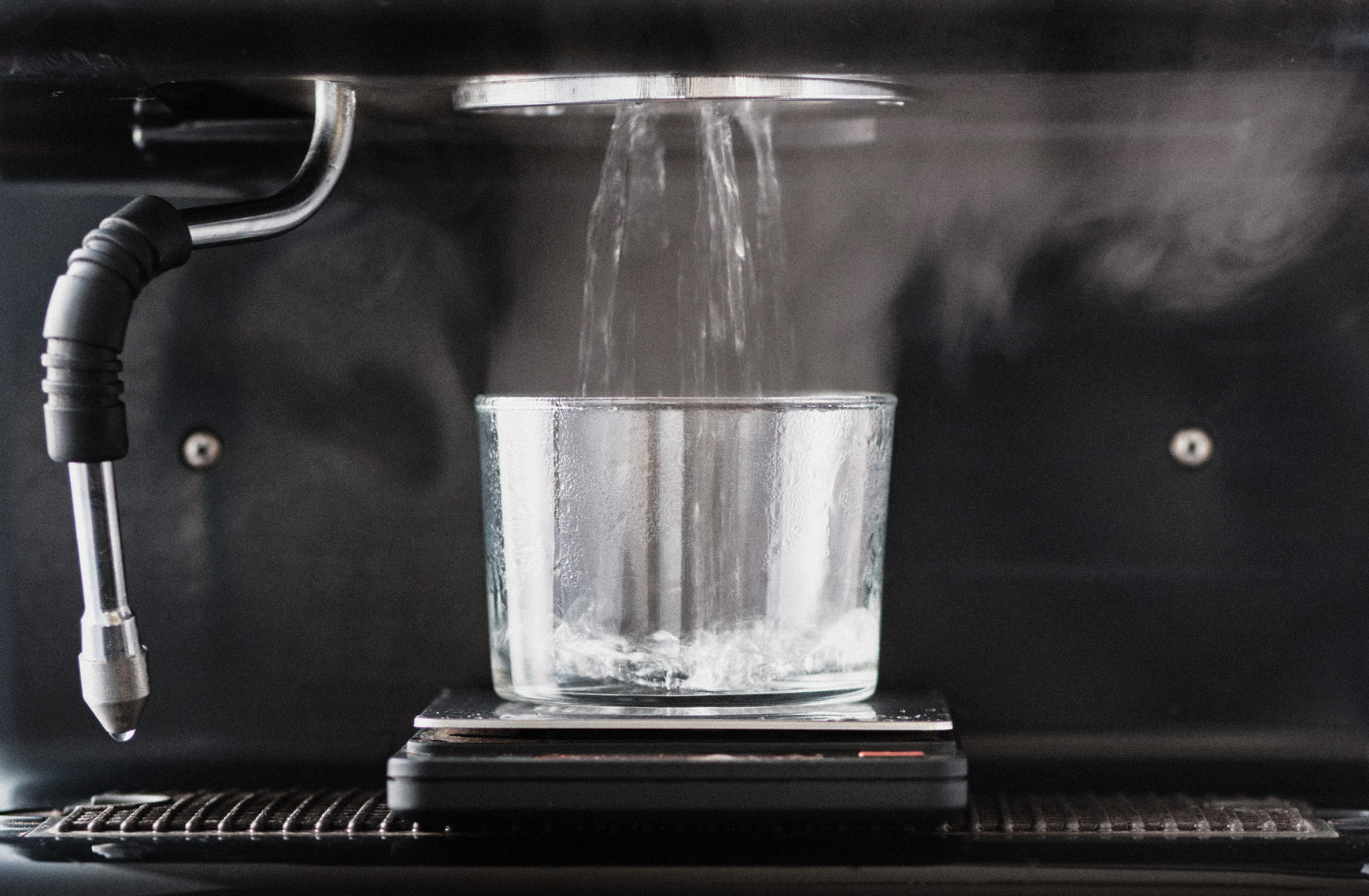 Measuring the water debit of an espresso machine
Measuring the water debit of an espresso machine
To measure the water debit of each group, place a pitcher under the group head, turn on the pump, and start a stopwatch. After exactly 30 seconds, stop the pump and weigh the amount of water in the pitcher. If the water debit is different between groups, then you need to find out what is impeding the flow.
The water debit is not affected by the baskets, shower screens, or dispersion block, as these do not present much resistance to the flow of water. Instead, the culprit is generally the flow restrictor. This is a very narrow (<1mm) tube that the brew water has to pass through. Because it’s narrow, it can easily be blocked up by limescale or grit. When this happens, it needs to be taken out and cleaned or replaced. Depending on what machine you have, removing the flow restrictor can be as easy as taking out the shower screw (on new La Marzocco machines), or it can be a difficult job best left to a technician.
Flow restrictors in different sizes: 0.7mm (left) and 0.5mm (right). Small differences in the size of restrictors make a big difference to the flow of espresso.
You can descale the flow restrictor by soaking it in descaling solution, or if necessary unblock it using a narrow piece of wire, or a ‘jet file’ — a tool designed to clean out carburetors. If you use a tool to clean out the flow restrictor, be gentle to make sure that you don’t inadvertently widen the aperture. While you’re cleaning the flow restrictor, it’s also a good idea to check for any grit or scale build up in the flowmeter and remove it, otherwise the flow restrictor may become blocked again fairly quickly.
Flow restrictors also come in different sizes. If your flow restrictors are clean but the flow rate through them is different, then perhaps you have different-sized restrictors installed and one of them needs to be replaced. If you’re not sure what size to choose, try different sizes of restrictor and use whichever one gives you a water debit of around 250ml per 30 seconds.
Bleed The Groups
Sometimes, pockets of air can build up inside the group head, interfering with the flow of water through the group. After you’ve checked your flow restrictors, make sure that you also bleed any air out of the group.
The procedure is a bit like bleeding a radiator to let excess air out of your central heating system. The bleed valve is commonly a large allen screw located on the top of the group, but it can sometimes be electronically controlled. Turn on the machine and let it come up to temperature, then open the bleed valve by just a quarter-turn, to release any air trapped in the circuit. Once water starts to come out instead of air, then close the valve again. If the design of your machine means that there are any electronics close to where the water will bleed out, then make sure to turn off the machine just before you bleed the group. Some designs of espresso machine are considered ‘self bleeding’ and do not need this step.
 The Kees van der Western Speedster features a self bleeding group, which prevents air from becoming trapped in the machine.
The Kees van der Western Speedster features a self bleeding group, which prevents air from becoming trapped in the machine.
Preinfusion
If your water debit is roughly the same between groups, then another possible culprit is the preinfusion settings. If the preinfusion on your machine is electronically controlled, then double-check that the preinfusion is programmed exactly the same way. With an electronically controlled preinfusion, the preinfusion circuit may also have its own separate flow restrictors, in which case these may also need to be descaled. Double-check the flow rate during the pre-infusion stage only to see if it’s the preinfusion causing the problem.
 The preinfusion chamber under an E61-style group head. Incorrectly set preinfusion can be one cause of inconsistent shot times.
The preinfusion chamber under an E61-style group head. Incorrectly set preinfusion can be one cause of inconsistent shot times.
If your machine has mechanical preinfusion chambers, such as those found on E61-style group heads, then they may need to be serviced or replaced. You can check if these are causing issues by putting a blind basket into the group and timing how long it takes to reach full pressure — if one group takes more or less time to reach full pressure, then the preinfusion chamber is a likely culprit.
Group Temperature and Pressure
If none of the above fixes your problem, it’s a good idea to verify the temperature and pressure of the water delivered at each grouphead using a Scace thermofilter. If your groups have individual heating elements, or separate pumps, then they might need calibration or servicing, for example, and a Scace will let you check that the sensors on your machine are giving accurate readings. An unexplained drop in pressure in one group could be caused by a small leak somewhere in the circuit.
A Scace thermofilter accurately measures the temperature and pressure at the group head.
An Ounce of Prevention
By this point, you have hopefully fixed the issue with your machine, or at least know what you need to ask your espresso machine technician next time they visit. It’s also important, though, to know how to prevent it happening again.
The most common cause for a blocked flow restrictor is using one group less often than the others. It’s very common for baristas to use the group closest to the grinder most often, and only use the furthest group during busy times. This can cause different amounts of scale to build up on different groups, eventually leading to different shot times between groups. This is why it’s really important to rotate equally between all the groups on your machine.
Reducing the build up of limescale is also critical — so measure your water hardness regularly, make sure you’re using the right treatment for your water, and change your filter cartridges regularly to keep your water on point.
An inconsistency between groups like this often starts as a very small difference, but gradually gets worse until it becomes too frustrating to ignore. So if you see unexpected variation in your shots, however slight, trust your instincts and test the machine to make sure it’s working as it should. Working your way through the checklist above, you should be able to pinpoint the cause of the problem, and perhaps avoid the expense of calling out a technician. If you do need to call a technician, then you can at least make sure that you know exactly what needs fixing, so they can get you back up and running as quickly as possible.
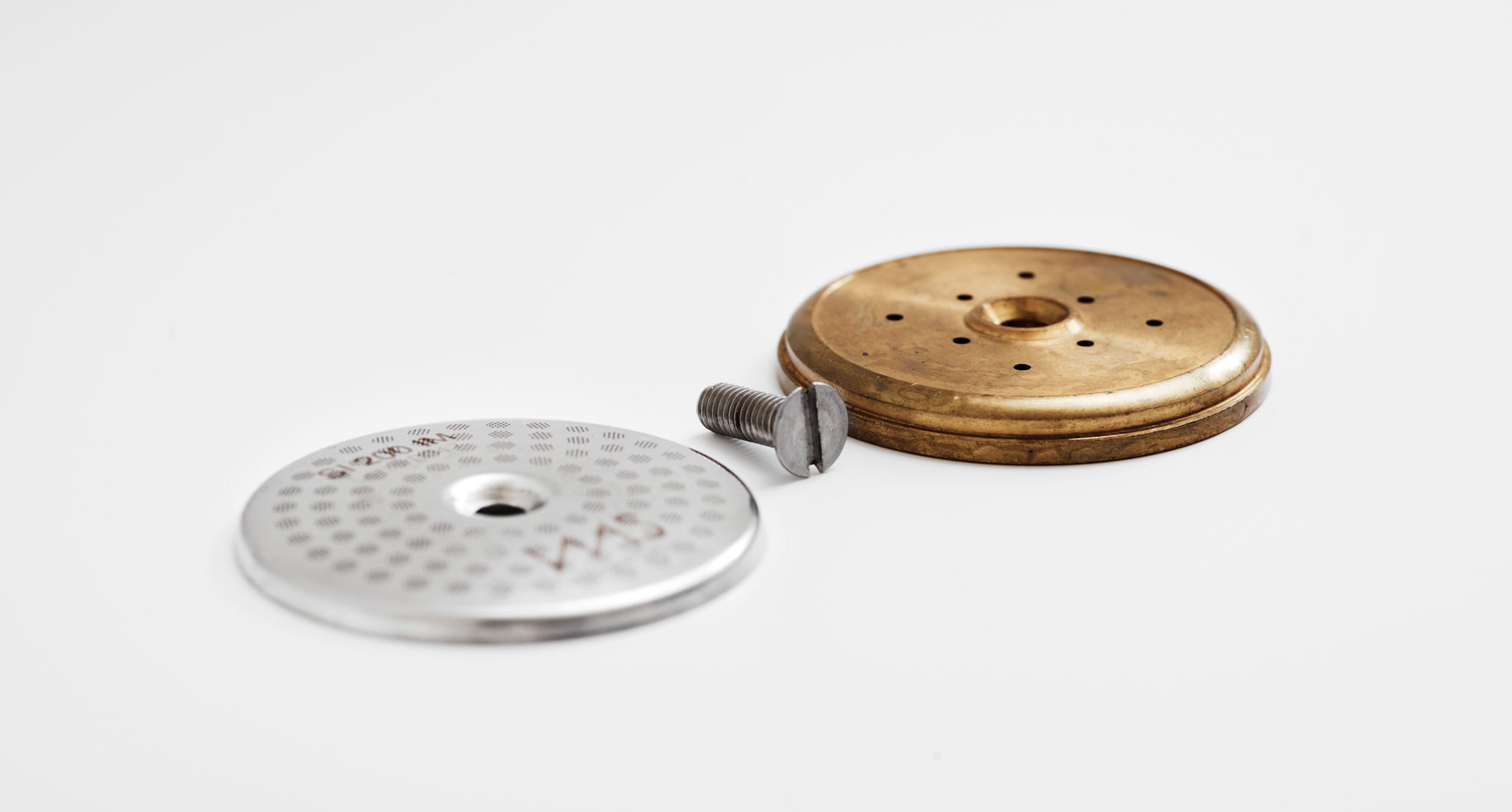
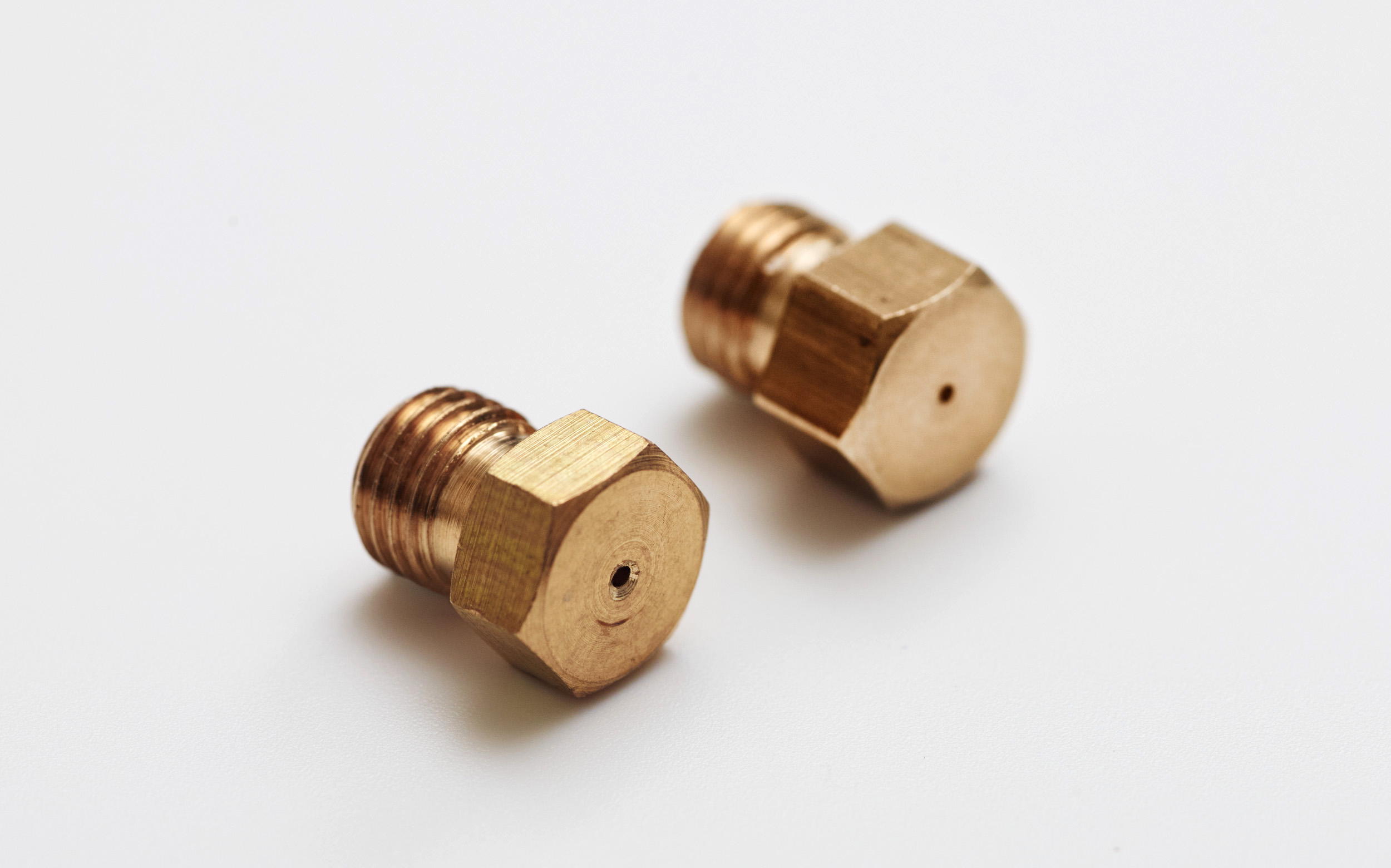
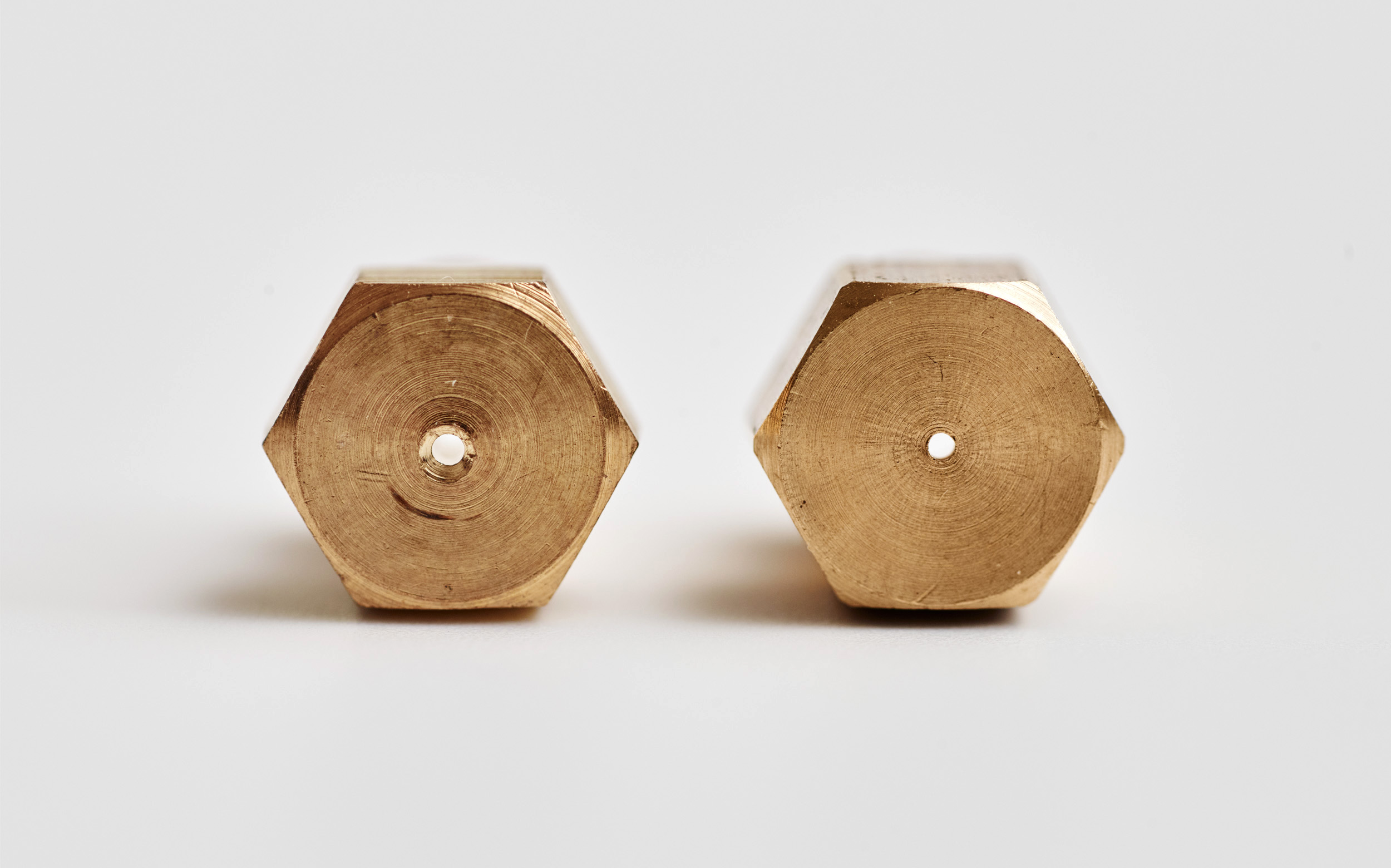
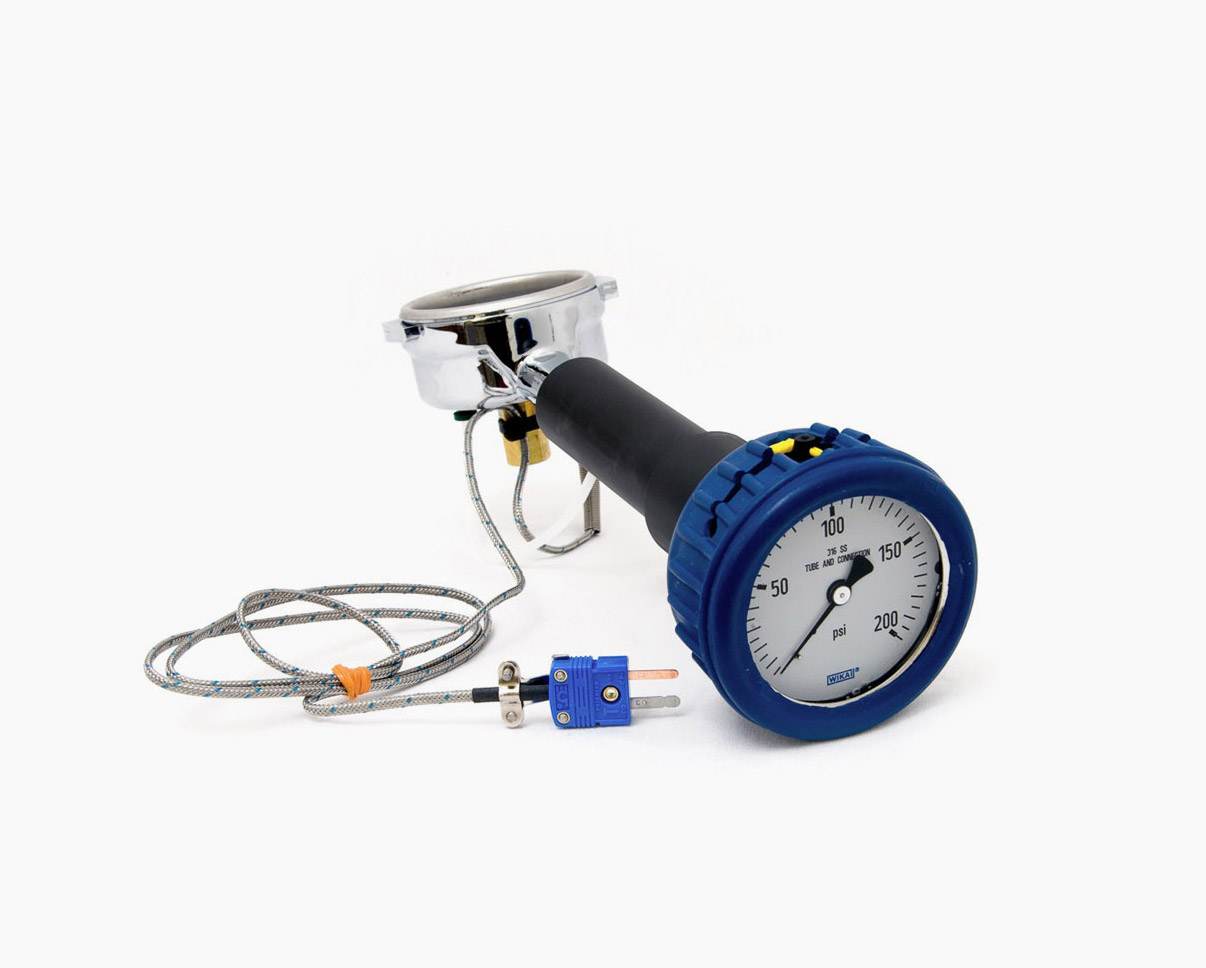
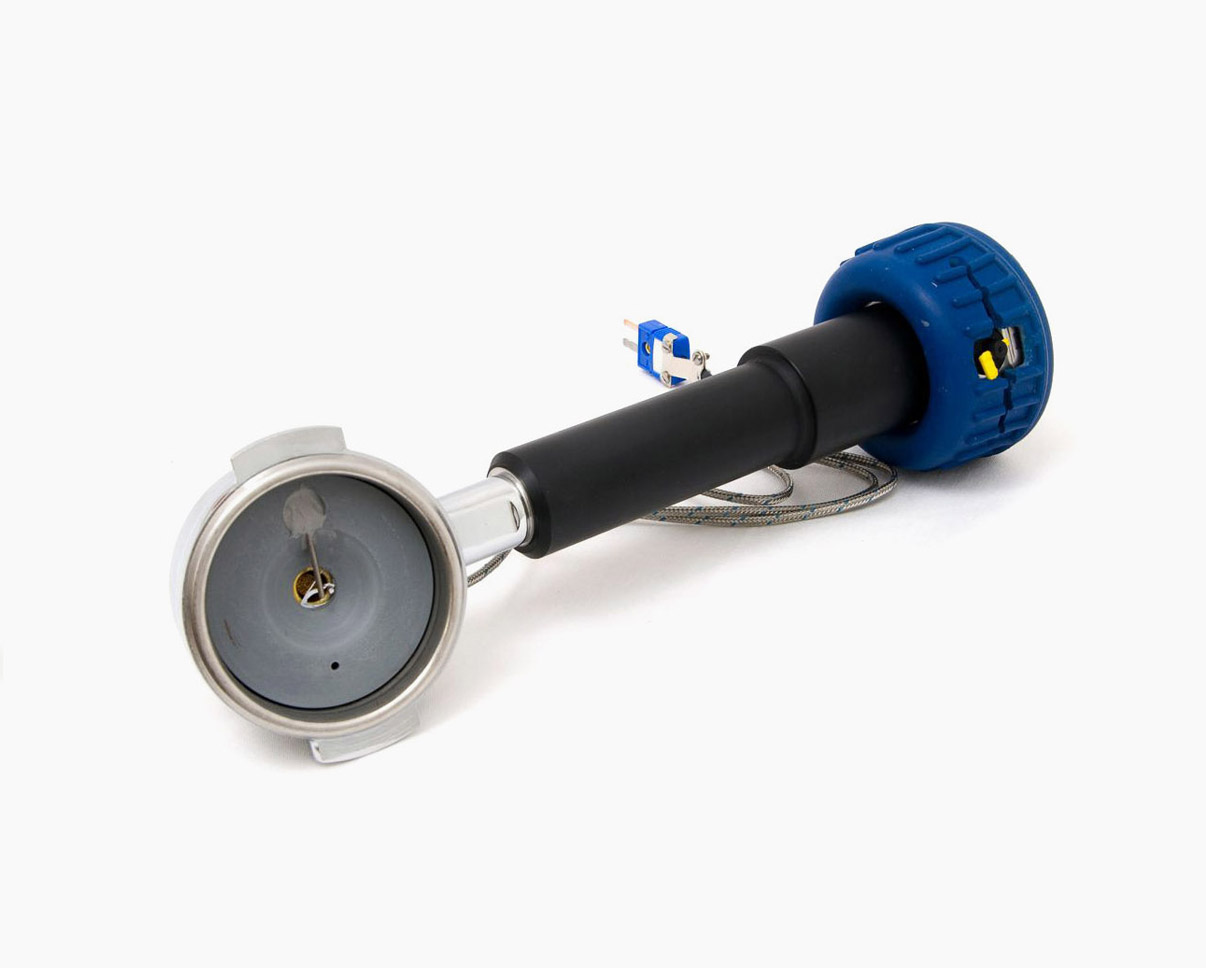




Hola, que pasa con los restirctores de teflon en el thermosifon ? estoy pensando en usar uno ya que mi debito de agua esta en 350g/30s
Really great and useful post at least for professional environments. I would like to ask you regarding the recommendation about the flow restrictor. You mention that one should choose the restrictor that provides a water debit of 250ml at 30”, but you don’t specify at what pressure would that be. Thinking that flow can also be regulated by the pump pressure, that means that there are many different sets of ”flow restrictor-pump pressure” that can provide the exact same water debit, which of course lead to quite different taste results.
Hey Geoly, thanks for commenting. We generally work in the 7-9 bar range. Lower pressures seem to have a surprisingly small effect on water debit, at least in the machines we’ve tried – probably due either to the amount of resistance to flow coming from other parts of the machine, or due to non-laminar flow which affects the relationship between pressure and flow rate.